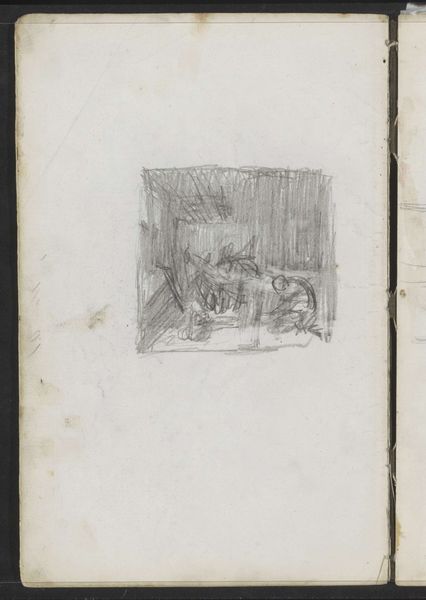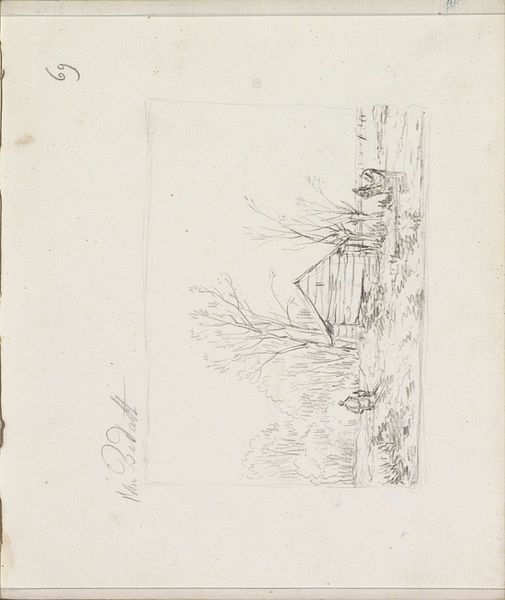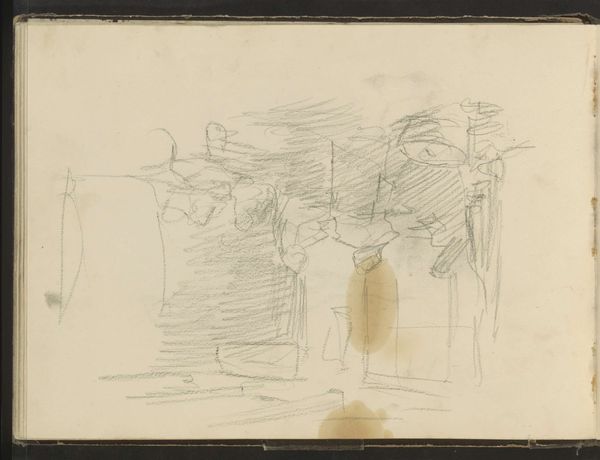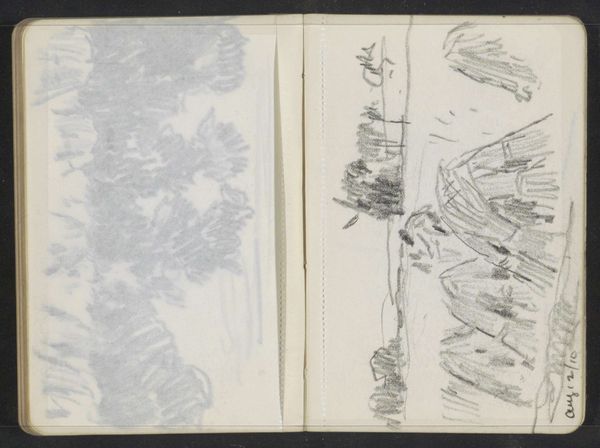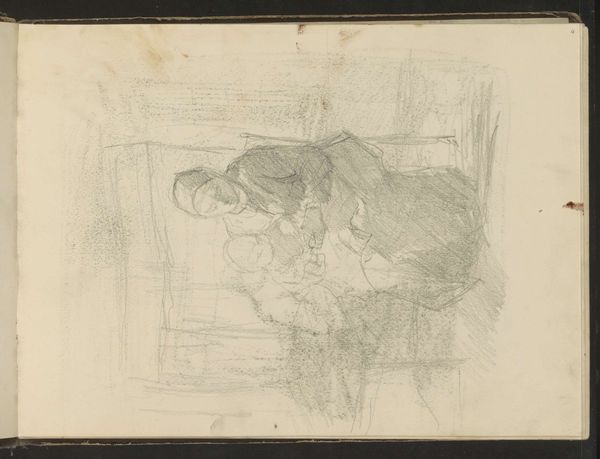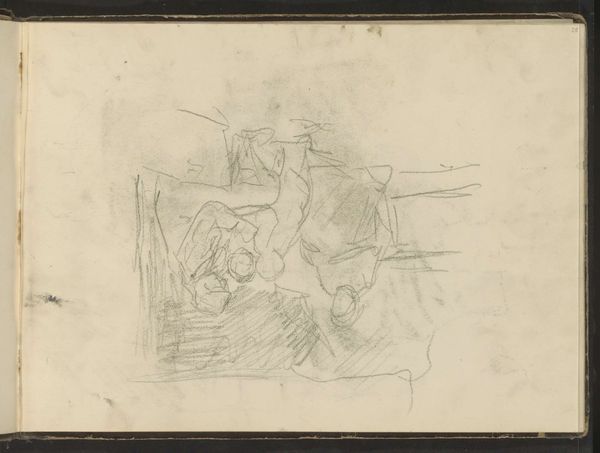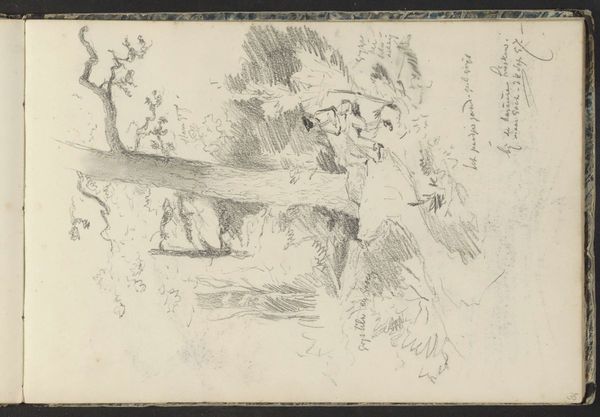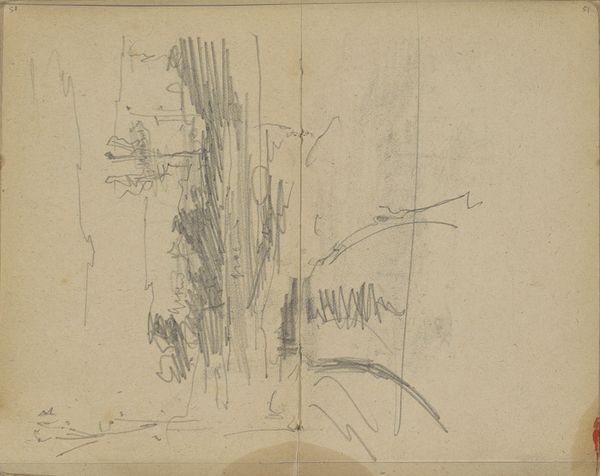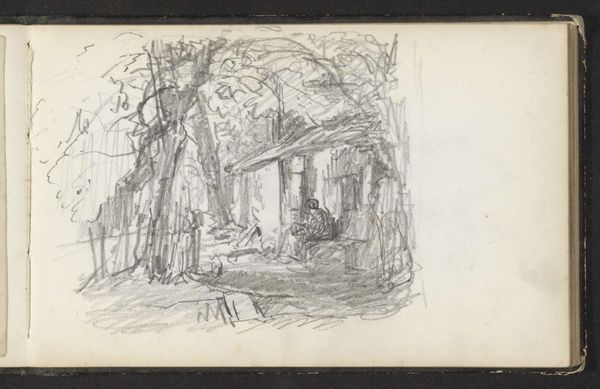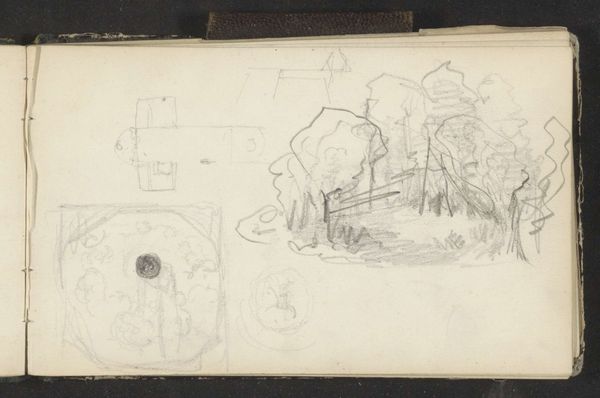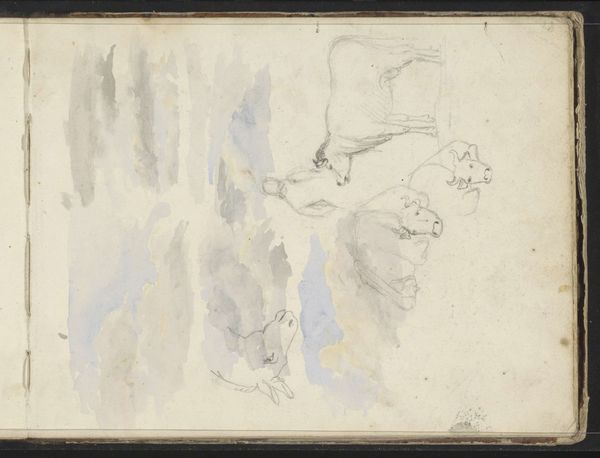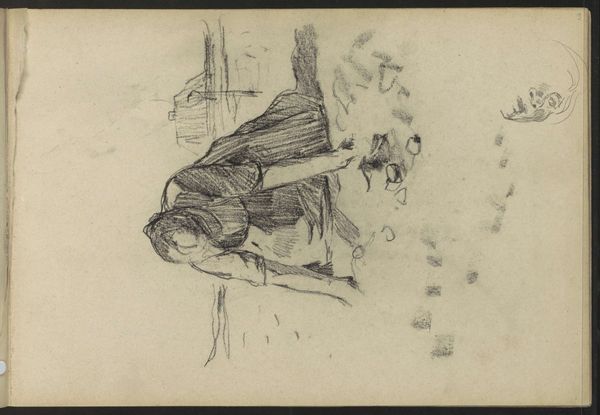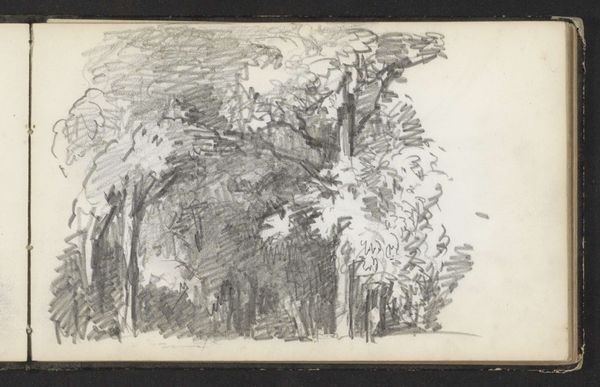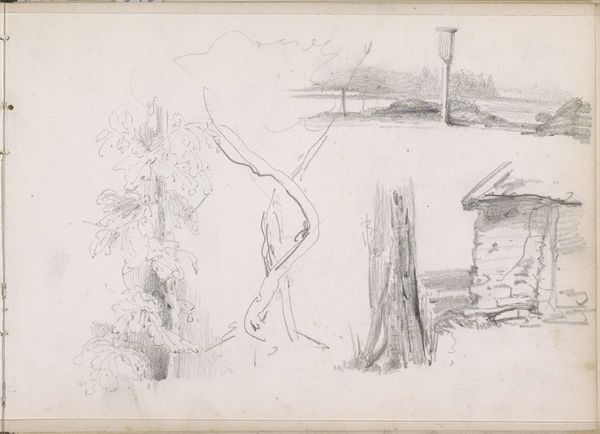
#
amateur sketch
#
toned paper
#
light pencil work
#
pencil sketch
#
personal sketchbook
#
ink drawing experimentation
#
pen-ink sketch
#
sketchbook drawing
#
watercolour illustration
#
watercolor
Copyright: Rijks Museum: Open Domain
Editor: This is Reinier Craeyvanger’s "Interieur met een paar dat een vel papier bekijkt," created sometime between 1822 and 1880. It's a pencil drawing with watercolor, currently held at the Rijksmuseum. It feels like a very private moment, like we're peeking into someone's personal sketchbook. What catches your eye in this work? Curator: The beauty of a sketchbook lies in its revealing glimpse into the artist’s process and social sphere. Consider where sketchbooks fit within the 19th-century art world. This wasn't intended for public display initially. How does that shift your perception? Editor: That's interesting. It makes it seem more honest and immediate, less about pleasing a patron or fitting into a particular style. Almost rebellious, in a quiet way. Curator: Precisely! Artists like Craeyvanger were often negotiating the demands of academic training with their own artistic impulses. Sketchbooks offered a space for free experimentation, a personal laboratory, beyond the gaze of the market and academy. This kind of private work shapes the art we see in public, too. Editor: So, the sketchbook becomes a space for developing their artistic voice outside of societal pressures? It's a political act in its own way, isn't it? Curator: Absolutely. And think about what they chose to sketch – a couple examining a paper. A reflection on knowledge, perhaps even artistry itself? The choice itself says something about their social interests. Editor: That’s fascinating. I hadn’t thought of it as a commentary on art making itself, or even knowledge production. I was just seeing a quick sketch. Now I see a deeper connection to the art world. Curator: These intimate glimpses allow us to reconstruct art history from the ground up, connecting artistic practice with broader social and intellectual currents. Editor: I’ll definitely look at sketchbooks differently now. They're more than just practice; they're like coded messages about an artist’s true thoughts. Curator: Exactly! They invite us to reconsider what we value in art and how social contexts shape even the most personal expressions.
Comments
No comments
Be the first to comment and join the conversation on the ultimate creative platform.
